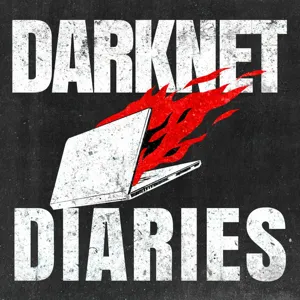Podcast Summary
Everyday situations hide opportunities and risks: Apple Card offers daily cashback, be aware of hidden opportunities and potential risks in everyday situations.
Apple Card offers daily cashback rewards with varying percentages based on where and how you make purchases. You can earn up to 3% cashback on Apple purchases, 2% on Apple Pay transactions, and 1% on other purchases. Meanwhile, Johanna Ferreira from PopSugar Juntos shares an intriguing story about Jack Barsky, a former East German spy who started working for the KGB after being approached by a seemingly innocent representative from a local optics company. This encounter led Jack to a series of covert meetings and tasks, ultimately making him a part of the Soviet intelligence network. While the Apple Card and Jack's story might seem unrelated, they both highlight the importance of being aware of hidden opportunities and potential risks in everyday situations. Whether it's earning cashback rewards or encountering mysterious individuals, it's essential to be informed and cautious. To learn more about the Apple Card and its benefits, visit apple.co/cardcalculator. For more captivating stories and content, check out PopSugar Juntos at popsugar.com/juntos.
Jack's spy training: intense evaluation and commitment: Jack underwent rigorous training and evaluation to become a spy, ultimately deciding to commit to the cause despite the risks and sacrifices.
Jack's experience is a testament to the intense evaluation and recruitment process of becoming a spy. During his training, Jack was constantly evaluated to determine his trustworthiness and readiness for bigger responsibilities. The stakes were high, as he was asked to make a life-altering decision to commit to the communist cause, which would require him to give up everything and live a dangerous double life in hostile territory. The training Jack received from the KGB was extensive, focusing on tradecraft and the tools necessary for communication, encryption, and blending in with the enemy. Despite the risks, Jack ultimately decided to take the chance and commit to the cause, believing that it was an opportunity to make a difference and live an exciting, Bond-like life.
Soviet Union's Extensive Training for American Infiltration: The Soviet Union trained Jack Barsky to infiltrate American society, providing him with one-on-one training, expanding his knowledge, and creating a false identity. His mission: gather intel and potentially undermine the US.
The Soviet Union trained Jack Barsky extensively to infiltrate American society. This included one-on-one training, broadening his knowledge of culture, literature, music, and learning English. He was then sent to the United States with a fake identity, Jack Barsky, which he filled out with a stolen birth certificate. During his training, he learned to blend in by watching American media, adopting American habits, and creating a backstory. The ultimate goal was to gather information and potentially bring down the United States as a powerful adversary.
Maximizing rewards with Apple Card and Viator: Use Apple Pay for higher rewards with Apple Card and book tours and activities through Viator for memorable vacations.
Apple Card offers different reward percentages based on how you make purchases, with higher rewards for using Apple Pay and lower rewards for using the physical card. Meanwhile, Viator can help travelers make the most of their vacations by providing access to a wide range of tours, activities, and experiences. Jack's story illustrates the importance of adaptability and resourcefulness, especially when facing unexpected challenges, such as being unable to communicate with loved ones or starting a new life in a foreign country. In both cases, having the right tools and resources at hand can make all the difference. So, whether it's maximizing your rewards or planning an unforgettable vacation, remember that the right tools and resources can help you get more out of your experiences.
Soviet Spy's Creative Methods to Obtain US Documents: During the Cold War, Soviet spies used creative methods to obtain US documents and blend in, including joining museums and using library cards to secure driver's licenses and Social Security cards.
During the Cold War, Jack Barsky, a Soviet spy, was sent to the United States with an explicit mission to gather intelligence and an implied mission to assimilate into American society. To achieve the latter, he faced numerous challenges in obtaining identification documents. He used creative methods, such as joining a museum membership to obtain a membership card, to secure a library card, which eventually led him to get a driver's license and a Social Security card. However, when it came to applying for a US passport, he encountered a roadblock due to a high school attendance question. Barsky returned to Moscow for debriefing and planning, and during his absence, his fiancée, Gerlinda, became pregnant. He resumed his life in the US, enrolled in college, and eventually graduated as valedictorian, all while maintaining his clandestine communications with the KGB. The story highlights the lengths to which spies went to blend in and gather intelligence during the Cold War era.
Cold War communication relied on Morse code, encrypted messages, and shortwave radio: During the Cold War, undercover agents used Morse code, encrypted messages, and shortwave radio for weekly communication with their handlers to avoid detection
Communication between undercover agents and their handlers during the Cold War was meticulously planned and executed to avoid detection. The contact was never in person due to the risk of being discovered. Instead, agents used Morse code, encrypted messages, and shortwave radio for weekly communication. They also used secret writing and hidden messages in letters. To ensure safety during travel, agents had to follow strict routines and cover their movements. If they suspected they were being followed, they reported back to their handlers. The success of these operations relied heavily on the agents' ability to memorize faces and blend in with their surroundings.
Dead drops: a crucial part of espionage communication: Dead drops allowed covert communication and material exchange without physical meetings, reducing risk of detection. Strong bonds could still form despite limited interaction.
The use of dead drops was a crucial part of the communication and exchange of materials between two unseen individuals in the context of espionage. This method ensured that the two parties never physically met, reducing the risk of detection. The dead drop technique involved the use of predetermined spots, signals, and containers for the exchange of objects. Communication was limited and awkward, with face-to-face interaction only occurring every few years during debriefings and retraining in Moscow. Despite this, strong bonds could still form, as evidenced by Jack's relationship with Penelope, which led him to risk everything to protect her and his new family. The use of dead drops demonstrates the lengths individuals would go to maintain their covert activities and the importance of careful planning and execution in the world of espionage.
A former KGB agent's daring escape to the US: People will go to great lengths for freedom, but intelligence agencies must remain vigilant to detect and counter covert operations, even in seemingly ordinary circumstances.
Jack Barsky, a former KGB agent, managed to defect from the Soviet Union by convincingly faking his own death with HIV AIDS diagnosis. He spent the next few years living in the shadows in the US, even starting a family, before being discovered by the FBI in a routine traffic stop. The incident led to a high-profile investigation, with the FBI first learning about Barsky from a former KGB archivist. This incident highlights the lengths people will go to for freedom and the challenges intelligence agencies face in detecting and countering covert operations. It also underscores the importance of vigilance and the potential risks hidden beneath seemingly ordinary circumstances.
Soviet Spy's Weekend Activities Lead to His Arrest: Thorough surveillance and investigation in counterintelligence operations can lead to the discovery of crucial information and ultimately, the arrest of a spy.
The Mitrokhin Archive documents revealed the existence of a Soviet spy named Jack Barsky in the United States. The FBI conducted extensive surveillance on Barsky to determine if he had any contacts or ongoing activities before making an arrest. During this surveillance, an agent posed as a birdwatcher to observe Barsky's weekend activities, which led to the discovery of his love for his family and children. The FBI eventually arrested Barsky after he confessed to his wife that he was a former spy during an argument, which was recorded through hidden microphones in their home. The arrest was significant as it highlighted the importance of thorough surveillance and investigation in counterintelligence operations.
From FBI investigation to friendship: Despite a past investigation for espionage, Jack Barsky built a new life in the US through shared interests and honesty, leading to a friendship with his FBI investigator.
Even after being investigated by the FBI for espionage, Jack Barsky was able to build a new life in the United States and maintain friendships with his investigators. Their shared interests, such as classical music and golf, helped establish a connection beyond the official communications. Barsky's honesty and authenticity during their interactions allowed him to eventually become a US citizen, despite the complications of his past. Although he still keeps some secrets, Barsky feels better living openly than hiding parts of his life. The friendship between Barsky and FBI agent Joe Reilly serves as an example of how shared interests and honesty can lead to unexpected connections and understanding, even in the most unusual circumstances.
Save 25% on first Nature's Sunshine order during Earth Month: During Earth Month, save 25% on your first Nature's Sunshine order using code NSP on their website, supporting both your health and the environment
That you can save 25% on your first order from Nature's Sunshine during Earth Month by using the code NSP at checkout on their website, naturesunshine.com. This is a great opportunity to try out their products and contribute to environmental sustainability at the same time. By supporting a company like Nature's Sunshine, you're not only getting high-quality natural health products, but you're also making a positive impact on the planet. So, don't miss out on this offer and make your first Nature's Sunshine purchase with the code NSP this Earth Month. Remember, every little bit helps, and together we can make a difference. Happy shopping!






